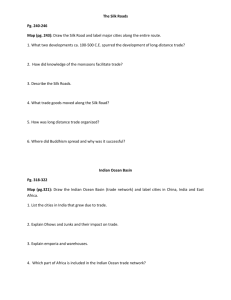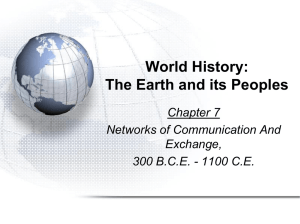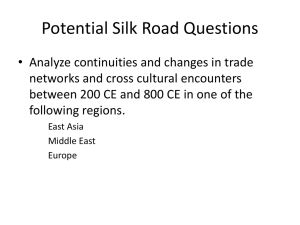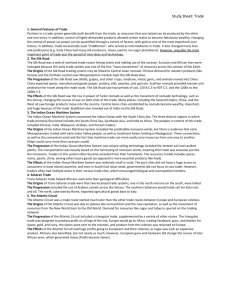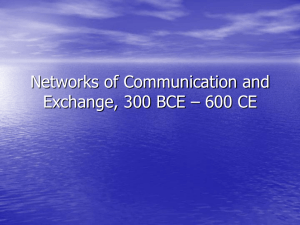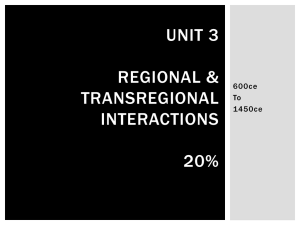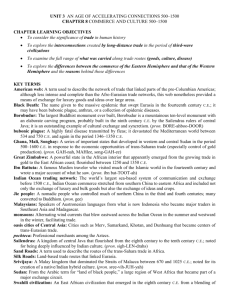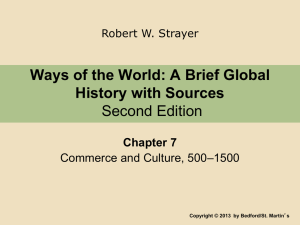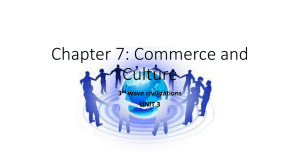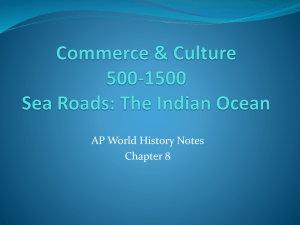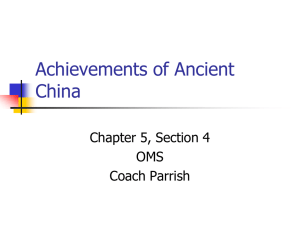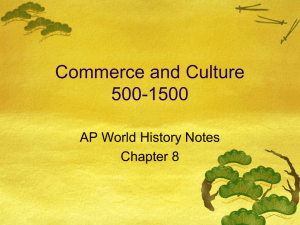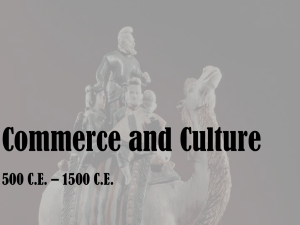Station 1: The Silk Road
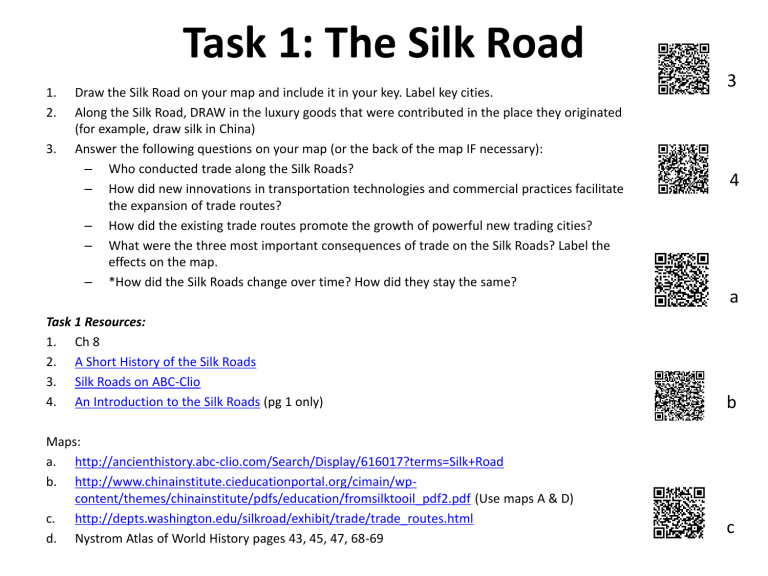
Task 1: The Silk Road
1.
Draw the Silk Road on your map and include it in your key. Label key cities.
2.
Along the Silk Road, DRAW in the luxury goods that were contributed in the place they originated
(for example, draw silk in China)
3.
Answer the following questions on your map (or the back of the map IF necessary):
– Who conducted trade along the Silk Roads?
– How did new innovations in transportation technologies and commercial practices facilitate the expansion of trade routes?
– How did the existing trade routes promote the growth of powerful new trading cities?
– What were the three most important consequences of trade on the Silk Roads? Label the effects on the map.
– *How did the Silk Roads change over time? How did they stay the same?
Task 1 Resources:
1.
Ch 8
2.
A Short History of the Silk Roads
3.
Silk Roads on ABC-Clio
4.
An Introduction to the Silk Roads (pg 1 only)
Maps: a.
http://ancienthistory.abc-clio.com/Search/Display/616017?terms=Silk+Road b.
http://www.chinainstitute.cieducationportal.org/cimain/wpcontent/themes/chinainstitute/pdfs/education/fromsilktooil_pdf2.pdf
(Use maps A & D) c.
http://depts.washington.edu/silkroad/exhibit/trade/trade_routes.html
d.
Nystrom Atlas of World History pages 43, 45, 47, 68-69 c b a
3
4
Task 2: Indian Ocean Trade
1.
Draw the Indian Ocean Trade Route on your map in a separate color and note it in your key.
2.
Along the Indian Ocean trade route, draw in the goods that were contributed in the place they originated (For example: Cotton cloth in India).
3.
Answer the following questions on your map:
– Who conducted trade on the Indian Ocean?
– What technologies were innovated to facilitate ocean travel?
– What were the three most important consequences of trade on the Indian Ocean?
– How is Lynda Shaffer’s Southernization a reinterpretation of the importance of Indian
Ocean trade? We will cover this question together!
Task 2 Resources:
1.
Ch 8
2.
http://www.bu.edu/africa/outreach/resources/indian/
3.
http://osbornehighschool.typepad.com/files/trade-routes.ppt
4.
http://teachinginsanity.net/whap/Post-Classical%20Unit/southernization.pdf
Maps a.
http://media.maps.com/magellan/Images/WRLH049-H.gif
b.
http://domin.dom.edu/faculty/dperry/hist270silk/calendar/zhenghe/tradesw.htm
c.
http://www.hist.umn.edu/hist1011/calendar/30-Indian%20Ocean/indianocean.htm
d.
Nystrom Atlas of World History pgs 42-43, 45, 50-51, 68-69
2
3 a b c
Task 3: Trans-Saharan Trade
1.
Map the Gold/Salt trade and include it in your key. Also include symbols to represent the location of gold and salt in Africa.
2.
Label the city of Timbuktu
3.
Answer the following questions on your map:
– How did Africa's gold/salt trade connect the continent with Europe and Asia?
– What kind of cultural diffusion occurred as a result of the gold/salt trade?
– What did the gold/salt trade have to do with the rise of West Africa's three major empires: Ghana, Mali, Songhai?
Task 3 Resources
Content
1.
Ch 8
2.
http://www.smithsonianeducation.org/educators/lesson_plans/currency/essay2.html
3.
http://ancienthistory.abcclio.com/Topics/Display/1184448?cid=41&terms=Africa+gold+salt+trade
4.
Patterns of Interaction chapter 15
Maps: a.
Nystrom Atlas of World History pg. 86 b.
Patterns of Interaction chapter 15 c.
http://ancienthistory.abcclio.com/Search/Display/1184449?terms=Africa+gold+salt+trade+map
2
3 c
Task 4: Arab Slave Trade
1.
Map the Arab Trans-Saharan slave trade ONLY! The Trans-Atlantic slave trade has not yet started! Be sure to include the Arab slave trade on your key.
2.
Label the Swahili Coast.
3.
Answer the following questions on your map:
– Why was there a demand in the Arab world for African slaves?
– How did the Arab slave trade facilitate cultural diffusion?
– What is the legacy of this slave trade today?
Task 4 Resources
1.
Ch 8
2.
http://africanhistory.about.com/od/slavery/a/IslamRoleSlavery01.htm
(Read both parts 1
& 2.)
3.
Find an article discussing current slavery in Africa today: try BBC, CNN, etc
Maps: a.
Nystrom Atlas of World History pg 87 b.
http://myweb.unomaha.edu/~qbutler/gallery.html
(Scroll down and look for map titled
Arab Trans-Saharan Slave Trade)
2 b
